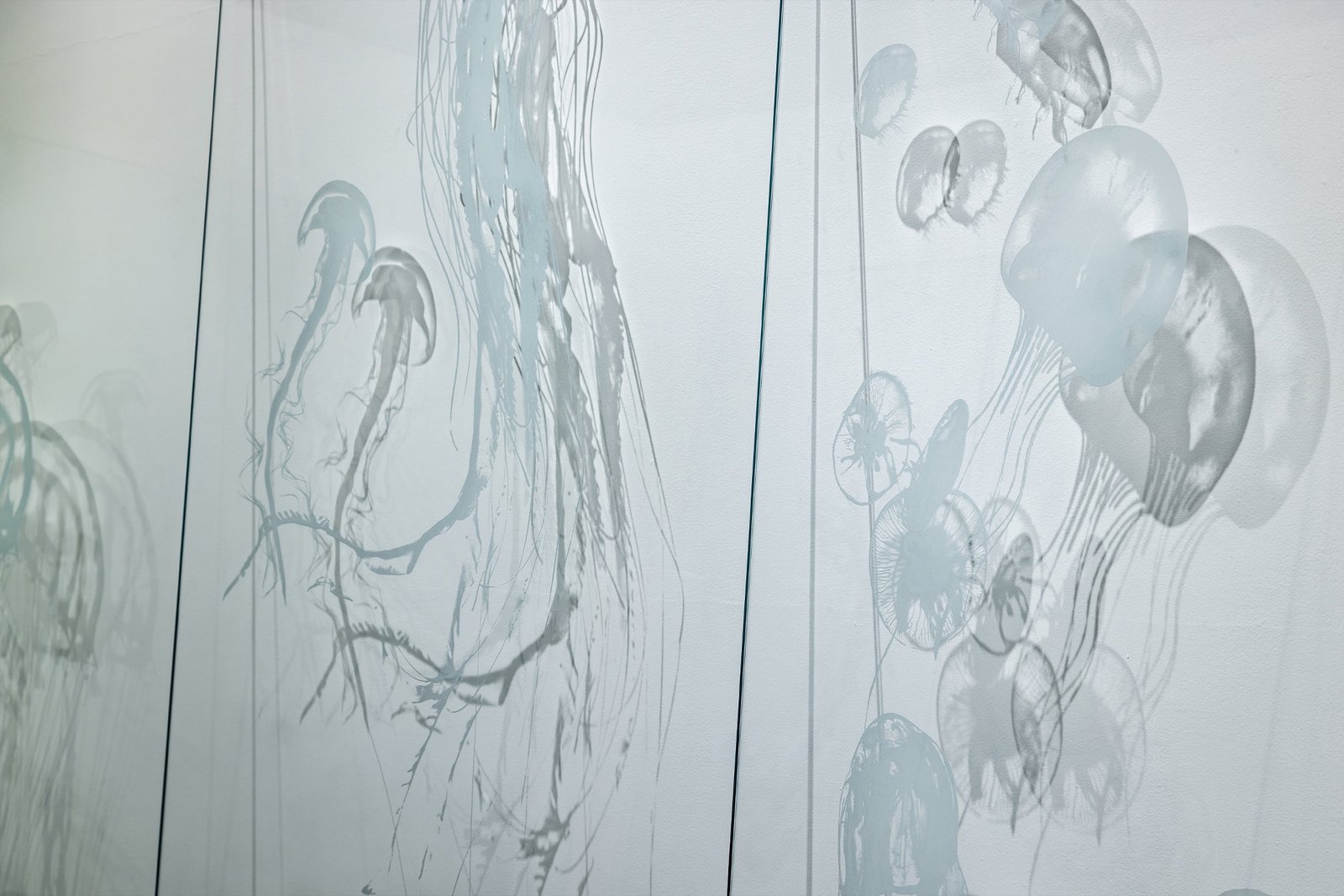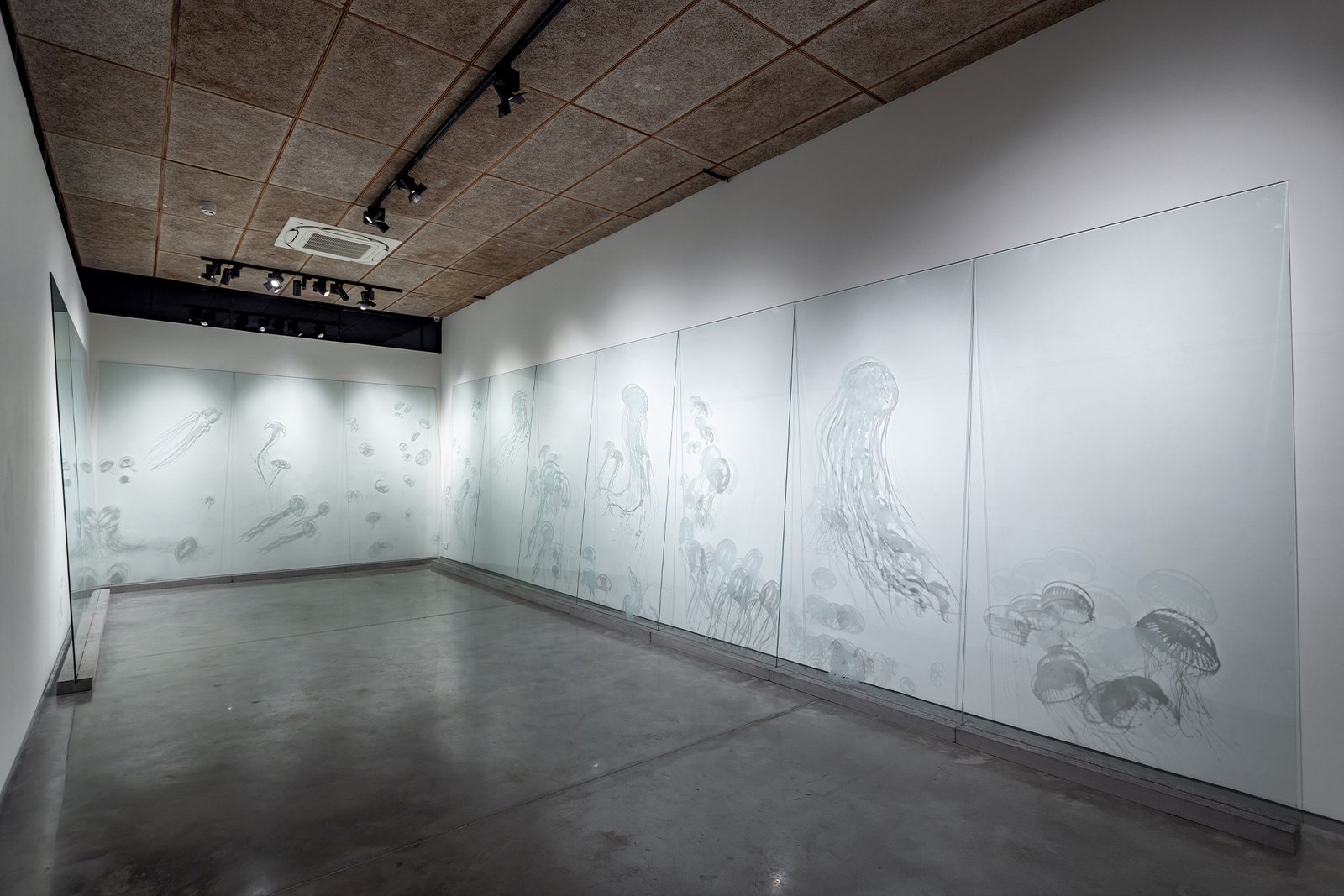Conference of the invisibles
Etched Glass / 48 x 96 (in) each of 13 Panels






Previous
Next
This ghostly panorama etched on glass engulfs the viewer into a liminal space
that is neither earthly nor aquatic, barely visual and only hesitantly physical. jellyfish have
survived since prehistoric times but will also be one of the few species that will thrive in the
on-coming transmogrifications of Nature, thinking of the changing climates and nature
rebelling and reminding our symbiotic relation with other living species.
Jellyfish are monsters. Soft glass parasols as colorful as flowers, they blossom from watery
depths with delicate grace. Yet woe to those tangled in their stinging tentacles. Along
beaches in Australia, Florida, and the Philippines, jellies are becoming a greater threat than
sharks, sending scores of swimmers to hospitals, some with fatal stings.
Off the coast of
Japan, 450-pound Nomura jellies have capsized boats that have snared loads of them in
their nets. In the Black Sea, comb jellyfish eat ten times their weight in a single destroying
fish and fisheries. As jellyfish consume the small fish fry, emptying seas of
other species, the waters fill up with jellies in fantastical numbers. The richness of earlier
marine assemblages is overwhelming. The ocean turns monstrous. Filling the seas with
sloshing goo, jellyfish are nightmare creatures of a future in which only monsters
cansurvive.
How did such monstrosity arise? Those Black Sea combs—so inspiring and so
terrible—arrived in the ballast water of ships as recently as the 1980s. They took over too-
warm seas emptied out by overfishing and polluted by the choking runoff of industrial
farming.
Under other conditions, jellies are capable of playing well with other species. If
jellyfish are monsters, it is because of their entanglements—with us. Jellies become bullies
through modern human shipping, overfishing, pollution, and global warming. In all heedless
entanglement with more-than-human life, we humans too are monsters.
(What If All Organisms, Including Humans, Are Tangled Up with Each Other? Art of living
on the Damaged planet)
Conference of the invisibles
Etched Glass / 48 x 96 (in) each of 13 Panels






Previous
Next